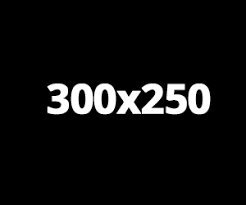The Political Landscape Ahead of Australia’s Federal Election
Australia is gearing up for a crucial federal election on May 3, 2025, a contest expected to be fiercely fought between the ruling Labor Party, led by Prime Minister Anthony Albanese, and the opposition, the Liberal-National Coalition, headed by Peter Dutton. With national polling indicating a near tie, both parties are mobilizing their strategies and policies to sway voters in their favor.
Immigration: A Central Issue
One of the most pressing topics emerging in the lead-up to the election is immigration, particularly concerning international students. This week, the Coalition released a statement detailing their proposals for international education, emphasizing their commitment to reshape the landscape of student enrolments as a response to the housing crisis in Australia. The Coalition argues that an elected Dutton Government would take immediate action to reduce international student numbers in higher education and vocational education and training (VET) as part of a broader plan to revive the Australian dream of home ownership and alleviate housing market pressures.
Proposed Changes to International Student Numbers
The Coalition’s plan suggests a radical reduction in the number of new international students at public universities, aiming for a decrease of at least 30,000 students per year compared to current Labor figures. This cap would limit yearly overseas student commencements to a maximum of 115,000 at public universities and 125,000 in the VET and private sectors. To implement this reduction, the Coalition intends to impose a percentage cap on foreign student enrolments starting in 2026, initially estimated at approximately 25%, though the final figure would depend on consultations with educational institutions and available data.
Implications for Universities
This proposed reduction impacts primarily metropolitan universities, particularly the prestigious Group of Eight institutions, known for their high international enrolment. Critics, including Universities Australia CEO Luke Sheehy, argued that such drastic measures would cripple one of Australia’s most significant income sources. International education, after all, accounted for over half of the nation’s GDP growth in 2023, playing a crucial role in sustained economic stability.
The Numbers Game: Analyzing the Feasibility
The feasibility of the proposed changes has been a point of contention among experts. Industry consultant Claire Field delved into the complexities of cap calculations, illustrating that a 25% cap on public university enrolments would necessitate a reduction of just over 21,000 students from 2023 levels. Similarly, limiting VET and private higher education enrolments to 125,000 would demand a 29% cut from current figures, raising questions about the practicality of such sweeping adjustments.
Proposed Visa Application Fees
Accompanying the proposed changes in enrolment are significant increases in student visa application fees. The Coalition plans to raise the fee to AUD$5,000 for students applying to Group of Eight universities and AUD$2,500 for all other international students. Additionally, a new charge of AUD$2,500 would apply to students wishing to change their education providers while in Australia. Given that current visa application fees are already the highest globally, this would further widen the gap between Australia and its competitors like Canada and the U.S.
Impact on the Education Sector
As various stakeholders have pointed out, such fee hikes could deter potential students from enrolling, severely impacting Australia’s international education sector. Group of Eight Chief Executive Vicki Thomson expressed concern that targeting these top universities with such high fees sends a damaging message to the international education market, suggesting that Australia does not welcome foreign students. This sentiment is echoed by English Australia CEO Ian Aird, who emphasized the negative implications for jobs, economic contributions, and Australia’s reputation as a leading study destination.
Economic Considerations and Workforce Implications
In 2023, approximately 250,000 Australians were employed in international education, a workforce that surpasses the combined employment in sectors like iron ore and gas mining. The knock-on effects of drastically reducing international student numbers and raising visa fees could be catastrophic for jobs and sectors reliant on this economic activity. Aird warned of billions in lost export earnings and local economic activity, while also threatening Australia’s standing in the global economy.
A Changing Narrative
The current context has raised doubts about the Coalition’s proposed policies given the rapidly changing dynamics of international education and the complexities involved in implementing enrollment caps and regulatory changes. Critics argue that the mechanisms needed to enforce such caps appear ambiguous and could face significant legislative hurdles. Moreover, the landscape of immigration policy and international scholarships is evolving, calling for a more nuanced approach that supports not just housing stability but the broader contributions of international students to Australian society and economy.
As Australia approaches the election date, this critical dialogue surrounding immigration, housing, and education continues to shape the tone and direction of the political debate, inviting scrutiny from all corners of the electorate.




